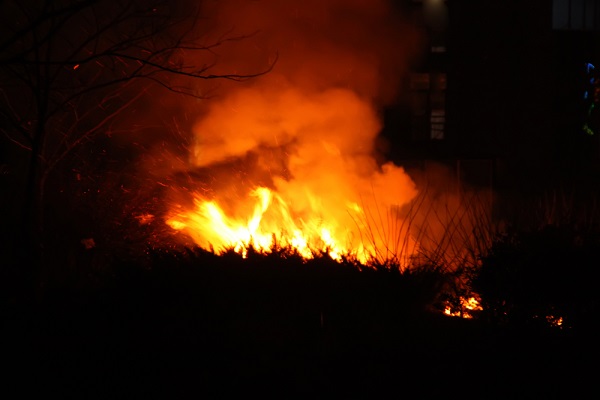Counting the Costs of the Growing Threat from Wildfires

By: Justin Smith
Wildfires are becoming more frequent, more destructive and costing more than ever before. The western U.S.—where the most attention is concentrated—has seen wildfires increase by over 400% since 1970. While the true cost of wildfires is difficult to quantify, those that can be quantified are staggering—for instance, the 2018 wildfire season in California cost $148.5 billion, which is equivalent to 1.5% of California’s GDP.
The long-term effects of wildfires are difficult to capture and often overlooked, including lost business revenue, reduced property values, costs to infrastructure and increased healthcare costs.
Like other natural disasters, such as floods and hurricanes, the impact from wildfires is exacerbated not only by climate change but by population density. People, and the infrastructure and businesses that follow them, are moving closer to areas that have always had naturally occurring wildfires or where conditions—often spurred on by climate change—are right for wildfires. A total of 4.5 million U.S. homes are at high or extreme risk of wildfire, with more than 2 million in California, according to Verisk’s 2021 Wildfire Risk Analysis.
While damage to residential property usually makes up the largest portion of direct costs from wildfires, businesses suffer as well in terms of property losses and business interruption. Businesses and individuals pay for their wildfire losses primarily through insurance. However, a recent study by the nonprofit Headwaters Economics showed that local communities—government, non-governmental organizations, businesses and homeowners—pay for nearly half of all wildfire costs.
The costs incurred at the local level are mostly for long-term damage, such as landscape rehabilitation, lost business and tax revenues, depreciating property values and impact on tourism and recreation. State and federal agencies cover the remaining costs, most of which are short-term—suppression, relief aid, evacuation and home and property losses not covered by private insurance.
The most effective way to reduce wildfire risk would likely be to prevent urban development in high-risk areas, but this obviously can’t be resolved in the short term. Therefore, it’s up to governments, local city planners, businesses and residents to coordinate efforts to better manage wildfire risk and create more resilient communities.
Some measures to consider include:
1) Improve land use planning. When developments are near wildfire-prone areas, controlling the number and spacing of structures, the placement of roads as fuel breaks, and the location and maintenance of utility poles may help mitigate risks from wildfires.
2) Better forest management. Improving the management of forested areas through the use of prescribed burning allows low-risk fires to burn off accumulated dry vegetation.
3) Strategic planning. More forward-thinking local government planning and investment can break the cycle of spending more on fire suppression and less on prevention.
4) Review building codes. Revised building codes will encourage fire-adaptive buildings by stipulating the use of fire-resistant materials.
5) Wildfire education. Provide widespread education for residents, incentivizing them to invest in their own preventative measures, develop recovery plans, and practice good fire safety and prevention.
As wildfire risk increases, more individuals and businesses need to weigh the costs and benefits of living or operating in a wildfire-prone area. Taxpayers will inevitably demand a voice in the discussion as their local and federal government shoulders the bulk of the costs.
All parties are, however, best served by a coordinated effort on the part of government, industry, insurers and the public to manage and mitigate the risk as much as possible.
Justin Smith is chief underwriting officer of Applied Underwriters.










